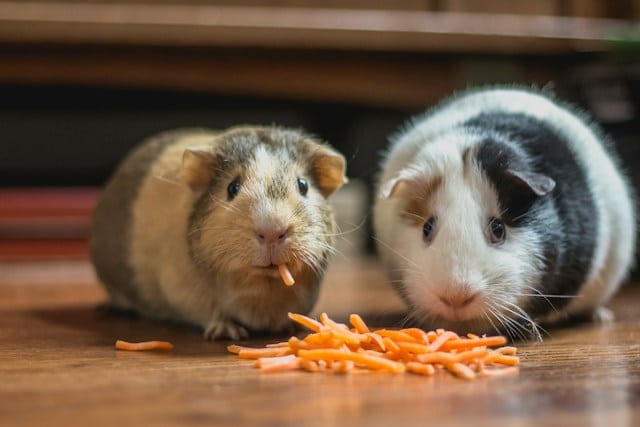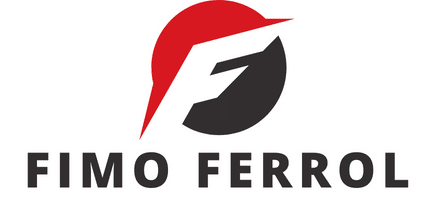How to Select an Appropriate and Safe Litter Material for a Litter-Trained Rabbit?

Rabbits are adorable creatures that make excellent pets. They are small, cuddly, and can be quite playful. One of the ways to ensure your rabbit’s comfort and health is by providing it with an appropriate and safe litter box. Litter training your bunny may not be a herculean task, however, the selection of suitable and safe bedding material for your rabbit’s litter box needs careful consideration. This article will guide you through the essentials of selecting the best litter material for your litter-trained rabbit including the various types available, the factors to consider, and how to maintain cleanliness.
Selecting the Right Litter Material: An Introduction
Choosing the right litter material for your bunny is essential for their comfort, health, and overall well-being. There are various types of litter materials available in the market, but not all are safe or suitable for your pet rabbit.
A voir aussi : What Are the Best Strategies for Socializing a Shy Rescue Cat?
Some common types include paper-based litters, wood pellets, cat litters, and hay. However, the type of litter you choose must cater to your bunny’s needs, taking into account its breed, size, and age. Apart from that, you should select a litter that’s easy to clean and maintain.
Paper-Based Litters: A Safe and Biodegradable Option
Paper-based litters are a popular choice among rabbit owners. They are made from recycled paper and hence, are biodegradable. Paper litters are also highly absorbent, making them an excellent choice for soaking up your bunny’s pee.
A voir aussi : What Are the Best Techniques to Discourage Destructive Chewing in Puppies?
This type of litter typically does not contain any added chemicals or toxins, making it a safe option for rabbits. However, ensure that you choose a brand that does not use ink or bleach in their products as these chemicals can harm your pet.
It’s essential to note that while paper-based litters are safe and environmentally-friendly, they might not be the best at controlling odor. Hence, regular cleaning of the litter box is necessary to keep your bunny’s living space clean and odor-free.
Wood Pellets: An Absorbent and Affordable Choice
Wood pellets, also known as pellet litters, are another option that you can consider. This type of litter is made from compressed sawdust and is known for its high absorbency. Wood pellets can hold up to three times their weight in liquid, making them an excellent choice for managing urine output from your pet bunny.
Wood pellets are also affordable and available in bulk, making them a cost-effective choice for pet owners. However, it’s crucial to ensure that the pellets are not treated with any chemicals or additives that might harm your rabbit.
Remember, some rabbits might not like the hard texture of wood pellets. So, it might take some time for your pet to get used to this type of litter.
Cat Litters: Not Always a Safe Choice for Rabbits
While cat litters are commonly available and might seem like a convenient option, not all cat litters are safe for rabbits. Clay-based or clumping cat litters, in particular, should be avoided as they can cause respiratory issues and gastrointestinal blockages if ingested by your bunny.
However, some types of cat litters, such as those made from recycled paper or wood pellets, are safe for rabbits. Be sure to carefully read the product’s ingredients and avoid any litters that contain added fragrances, chemicals, or clumping agents.
Hay: A Rabbit’s Favorite Bedding
Hay is not only a staple food for rabbits but also can be used as a bedding material. Placing hay in your rabbit’s litter box will encourage them to use it as rabbits have a natural instinct to eat and poop in the same place.
However, hay itself is not very absorbent, so it’s best to use it in combination with another type of litter material like paper or wood pellets.
Remember, hay needs to be replaced frequently as your rabbit will eat it, and it can quickly become soiled.
Ensuring Cleanliness: Maintaining Your Rabbit’s Litter Box
A clean litter box is essential not only for your rabbit’s health but also for maintaining a pleasant home environment. It’s recommended to clean the litter box at least once a day to remove any soiled litter and replace it with fresh material.
Consider using a safe, pet-friendly disinfectant to clean the litter box thoroughly once a week. This will help prevent the buildup of bacteria and keep your pet’s living environment clean and odor-free.
In conclusion, selecting the right litter material for your rabbit is a critical aspect of pet care. By considering the factors mentioned above, you can ensure that your bunny’s litter box is not only comfortable and inviting but also safe and easy to maintain.
Litter Training Your Rabbit: A Step-by-Step Guide
Training your rabbit to use a litter box can greatly simplify your cleaning routine, and make your pet’s living situation more comfortable. Here’s a step-by-step guide to help you litter train your rabbit.
Start by observing your rabbit’s litter habits. Rabbits are naturally clean animals and usually choose one or two places to do their business. Once you’ve identified these areas, place litter boxes there. It’s advisable to have more than one litter box, especially if you have a large living space.
Next, it’s time to introduce your rabbit to the litter box. Place your rabbit in the litter box after meals, as rabbits often have the urge to poop after eating. Reward your rabbit with a small treat when it uses the litter box. This will help reinforce the behavior and make your rabbit more inclined to use the litter box in future.
Remember, patience is key when training a rabbit. Some rabbits may take a few days to get used to using a litter box, while others may take weeks. But with consistency and positive reinforcement, most rabbits can be litter trained.
In addition, always ensure that the litter box is kept clean. Rabbits are less likely to use a dirty litter box. So, cleaning out the box regularly will encourage your rabbit to continue using it.
Conclusion: Finding the Perfect Balance
In conclusion, selecting an appropriate and safe litter material for your rabbit requires careful thought. It’s all about finding a balance between your rabbit’s comfort, the litter’s absorbency, its ability to control odor, and how easy it is to clean.
Paper-based litters and wood pellets are excellent choices due to their high absorbency and safety. However, remember to read the labels for any harmful chemicals or toxins. Cat litters can be an option, but only those made from recycled paper or wood pellets. Avoid clay-based or clumping cat litters that can endanger your rabbit’s health. Finally, you can use hay for bedding, but remember to pair it with other more absorbent materials as hay alone is not very absorbent.
Your rabbit’s health and happiness, in part, depend on its living conditions. Investing time in litter training, maintaining cleanliness, and providing a fresh supply of appropriate litter material will bring comfort to your house rabbit.
With the right knowledge, you can provide a safe, comfortable, and clean environment for your rabbit. Remember, a happy rabbit makes for a happy pet owner. The House Rabbit Society agrees on the importance of creating an environment where your pet rabbit will feel secure and at ease. So, make your selections wisely and enjoy the companionship of your delightful pet.
